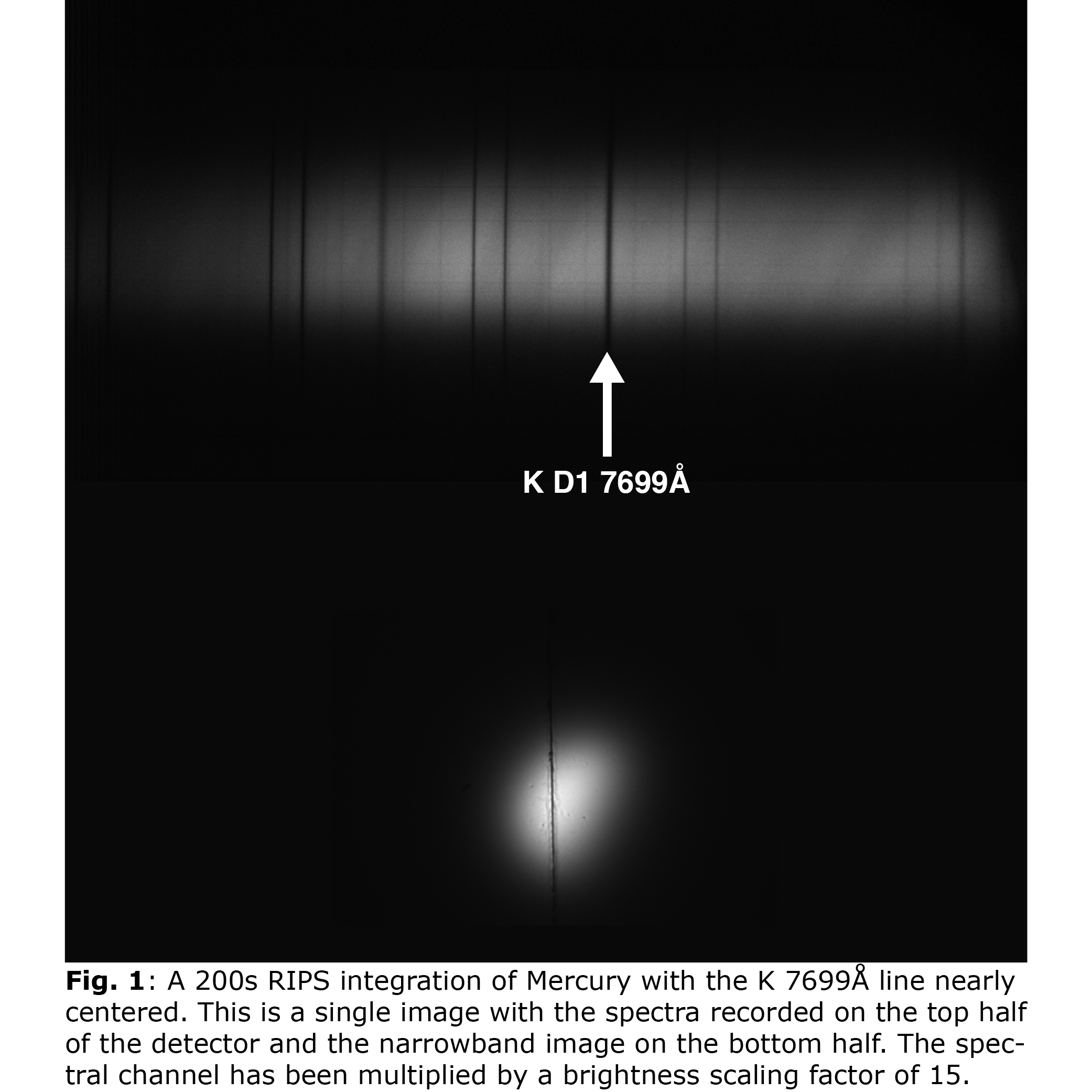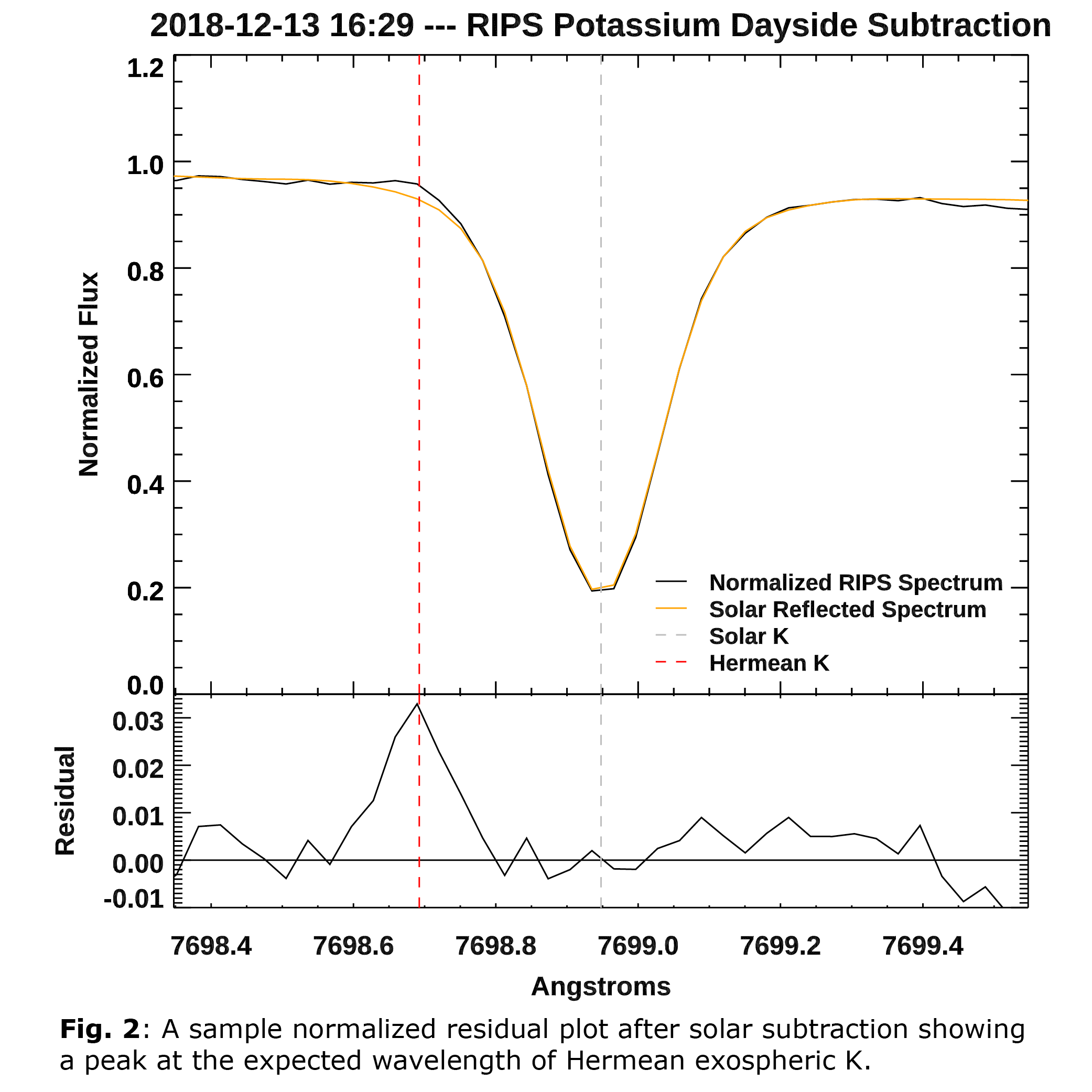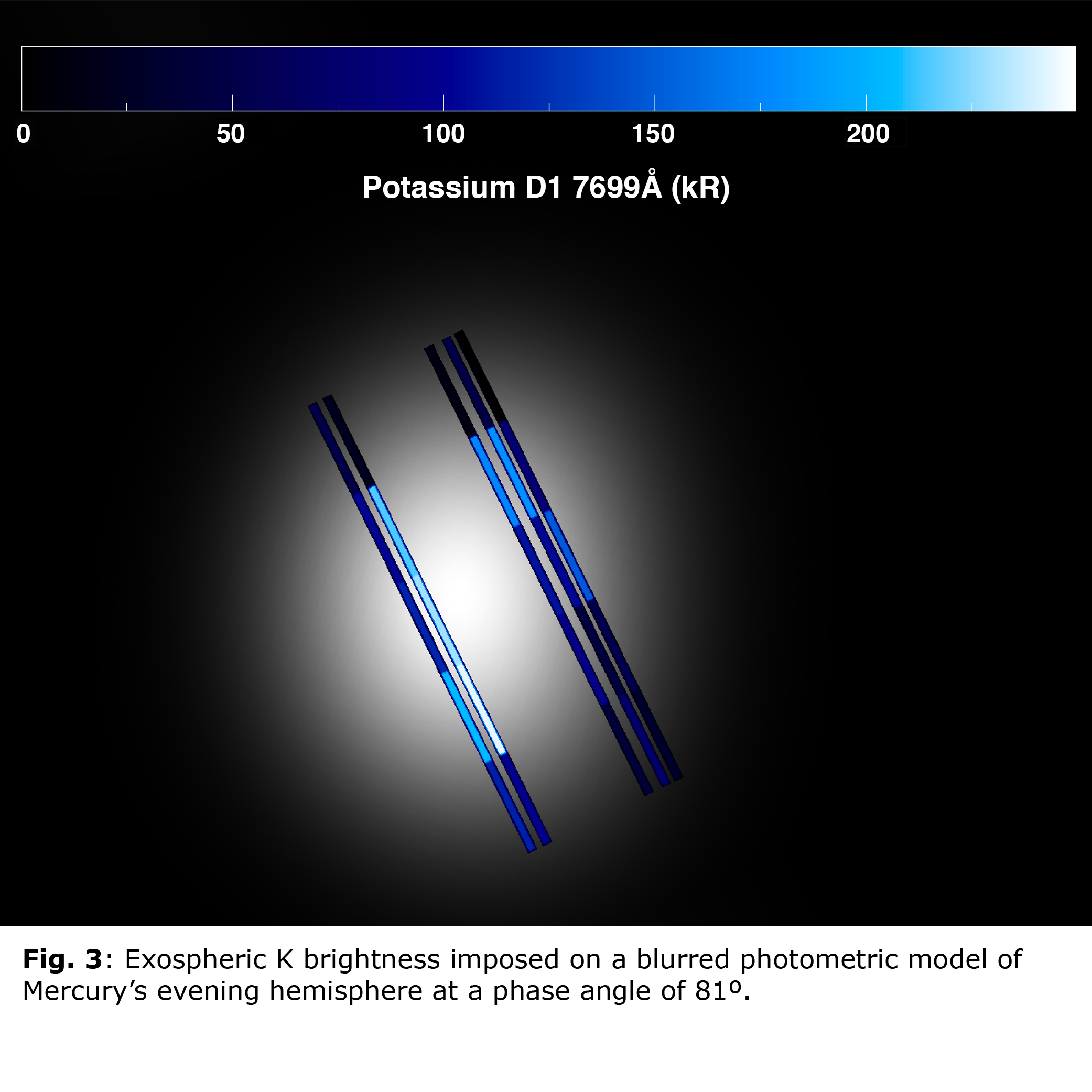The Brightness of Mercury's Potassium Exosphere
- 1Center for Space Physics, Boston University, 725 Commonwealth Ave., Boston MA 02215, USA
- 2LATMOS, Tour 45, Couloir 45-46, 4e étage (boîte 102), Université Pierre et Marie Curie, 4 place Jussieu, F-75252 Paris Cedex 05, France
- 3Air Force Research Laboratory, 550 Lipoa Pkwy. # 100, Kihei, HI 96753, USA
Introduction:
Sodium and potassium atoms produce the brightest emissions in Mercury’s tenuous exosphere. The existing body of work on K is substantially smaller than that of Na, since potassium is a more challenging observation from the ground and K emissions at 7665Å and 7699Å fall redward of the MESSENGER UVVS spectral range. Conversely, surface concentration of K in Mercury’s topmost soil has been mapped over the northern surface, while the Na regolith concentration has comparatively poor constraints [1][2]. In comparing the K and Na exosphere we also improve our understanding of the complex budget of sources and sinks in the alkali exosphere. The mechanisms generating sodium enhancements at the cold-pole longitudes, and variable hot spots near the magnetic cusp footprints, are not yet fully understood [3][4]. Mapping the structure of the potassium exosphere is therefore a worthwhile exercise, and better constraints on the Na/K ratio would be useful, since past literature offers a very broad range [5][6][7].
Observations:
K observations were performed with the Rapid Imaging Planetary Spectrograph (RIPS) at the 3.67m Advanced Electro Optical System Telescope (AEOS) at Haleakala in 2018. The data we analyze here consist of 5 observations with integration times of 100 to 200 seconds, where the planet’s image is stabilized using adaptive optics. RIPS simultaneously records a narrowband image and a spectrum on a single CCD using mirrored slit jaws. The imaging channel provides both spatial registration of the slit aperture across the planet’s disk and a reference for the atmospheric blurring so that absolute brightness can be calibrated in each frame. Fig. 1 shows a 200s frame with the spectral channel brightness multiplied by 15 for visibility. Continuing with Mercury as its target, RIPS will provide dedicated ground support for the BepiColombo mission.

Analysis:
After standard dark and flat corrections, a photometric model is spatially convolved with a kernel and matched to RIPS’ imaging channel in order to determine the atmospheric and optical blurring unique to each observation. This reference for absolute flux and image quality is critical for observations at very high airmass. We apply a basic Hapke formulation [8] with parameters determined from MESSENGER’s Mercury Dual Imaging System [9]. The rotation and location of Mercury’s disk on RIPS’ detector, as well as an estimate for the seeing, are extracted by matching the imaging channel and photometric model. The result determines the absolute flux of Mercury’s continuum in units of MegaRayleighs per angstrom along the slit-length of the spectral channel.
The recorded spectrum is rectified and normalized to the theoretical flux of the continuum. The spectrum is then spatially binned across Mercury’s disk. We found that five bins best optimized signal-to-noise ratio while preserving spatial information. The continuum is fit and subtraction is performed using a solar model [10]. This produces a residual signal of exospheric K seen in Fig. 2, which is integrated to obtain the binned brightness.

Results:
Fig. 3 shows the potassium emission in five discrete slit positions across Mercury’s disk imposed on a photometric model blurred to the average of the individual frames. The brightest calculated value for K is 250 kiloRayleighs, with the lowest being 3 kR. The mapped data suggest polar enhancement, particularly in the south. Enhancement over the southern cusp is characteristic of Mercury’s Na exosphere [4], but more data need to be analyzed to support this claim for K. Standard “g-value” calculations of the K excitation rate by solar photons allows this absolute brightness to be converted to column density. The peak column density corresponding to 250 kR is 4.1 × 109 cm-2. Local densities may be higher if the emitting region is unresolved. This column, together with previous RIPS results for Na D1+D2 abundance [4], results in an estimate of the Na to K ratio in the Hermean exosphere of about 25. This value is smaller than disk-averaged ratios in Potter et al. [5] (Na/K~ 34 to 142), or the range of spatial variations in the ratio that Doressoundiram et al. [7] reported (Na/K~ 80 to 400), but lies within the lower range reported by Killen et al. [6] (Na/K~ 22 to 49) across the planet’s dayside. The ratio calculated here should be interpreted cautiously since, while this estimate represents Na and K measurements from the same technique, these species were not observed concurrently, and alkali emissions are known to vary temporally.

References:
[1] Peplowski P. N. et al (2012) JGRE 117, E00L10.
[2] Peplowski P. N et al (2014) Icarus 228, 86.
[3] Cassidy, T. A. et al (2016) GeoRL 43, 121.
[4] Schmidt, C. A. et al (2020) Planet. Sci. J. 1, 4.
[5] Potter, A. E. et al. (2002) J. Geophys. Res. 107, E6.
[6] Killen, R. M. et al. (2010) Icarus 209, 75.
[7] Doressoundiram, A. et al. (2010) Icarus 207, 1.
[8] Hapke, B. (2012) Theory of Reflectance and Emittance Spectroscopy 2nd ed. (Cambridge: Cambridge Univ. Press).
[9] Domingue, D. L et al (2016) Icarus 268, 172.
[10] Kurucz, R. L. (2005) http://kurucz.harvard.edu/sun.html.
How to cite: Lierle, P., Schmidt, C., Baumgardner, J., Moore, L., and Swindle, R.: The Brightness of Mercury's Potassium Exosphere, Europlanet Science Congress 2020, online, 21 Sep–9 Oct 2020, EPSC2020-493, https://doi.org/10.5194/epsc2020-493, 2020.

